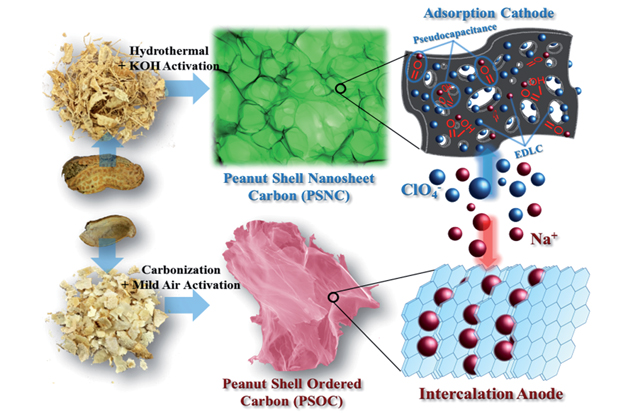
- A hybrid ion capacitor is capable of storing charge both electrostatically and electrochemically, providing an intermediate in terms of energy and power between traditional batteries and supercapacitors
- Peanut shells are used because they are easy to source, cheap and have limited commercial use, mostly ending up in landfill sites. However, the shells were hardly chosen at random, the team recognised important structural characteristics of both the inner and outer peanut shells to give desirable anode and cathode materials, respectively. The homogenous inner portion of the shell, primarily consisting of highly cross-linked polymer lignin, lent itself to the fabrication of inter-dilated graphene layers perfect for intercalating large sodium ions as an efficient anode. The cathode, a high surface area graphene-like material, was synthesised from the cellulose-rich heterogeneous outer peanut casing
- Materials experts have praised the work. Yuping Wu from the University of Fudan in China, was impressed by the excellent cycling stability of the electrodes: ‘These data show that this NIC can be a promising choice for applications.’ Chengdu Liang, of Oak Ridge National Laboratory in the US, admires the project but recognizes that more investigation is necessary